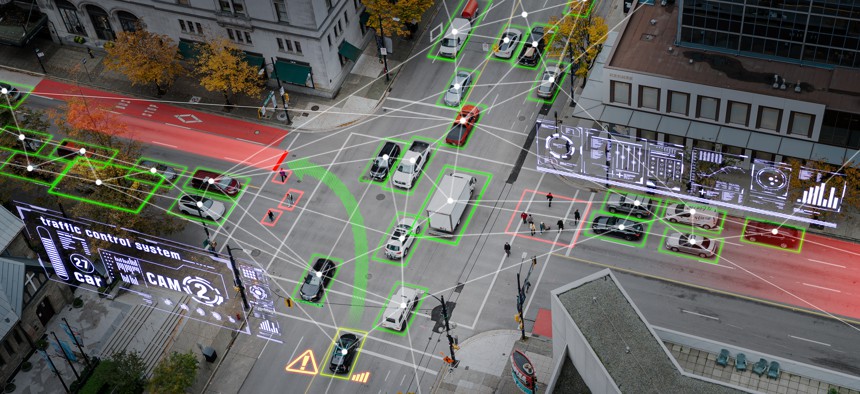Future-proofing smart cities with open standards

choi dongsu/Getty Images
Open standards can help smart cities prevent tech obsolescence and maximize growth.
The building blocks for a smart city include forward-facing practices and a solid development framework, one expert suggested.
Speaking at the Jan. 12 MITRE Smart City Summit, Michael Dunaway, the program lead of the National Institute of Standards and Technology’s Global Communities Technology Challenge program, said an open standards approach is crucial for cities to stay smart as technology advances.
“The starting point is going to be an open standards approach to development that offers the opportunity for future growth and expansion and evolution of digital transformation,” Dunaway told GCN.
An open standards framework is fundamental to future-proofing initiatives, Dunaway said. It allows service providers or technology developers to understand how the services they offer should integrate with existing and planned urban technologies. It also enables interoperability, which could stave off obsolescence and keep a city’s infrastructure connected even as applications are added.
For instance, when deploying a connected traffic control and management system, city leaders should keep in mind that an open source framework will make it easier to transition to communicating with vehicles on the road.
Dunaway also advised that cities forge a baseline of what being a smart city means to them so they can better measure their progress.
“Is it simply integration of technologies? Are there a number of other parameters?” Dunaway said. Every agency will have a different definition, he said, and they will all have different metrics based on their needs and available resources. All cities should establish a framework that helps them understand what data they collect and how it is used, he said.
Smart cities should also ensure their data is readily accessible and shared across agencies for dual use, Dunaway said. For instance, interoperable data from citywide sensors could allow the department of transportation and the emergency management agency to improve coordination and efficiency during evacuations. Each agency has its own set of priorities, but data can help them intersect at critical times, Dunaway said.
Leaders should also consider the number of digital services they already offer and how they improve government operations. Evaluating the quality of those services and aligning them with community priorities is another vital step towards smart city development, Dunaway said.
“Digital transformation is going to continue in the future forever,” Dunaway said. “What we want to do is maximize opportunities for growth, for integration of new technology systems.”
NEXT STORY: Governor calls for $37M boost in drone funding






